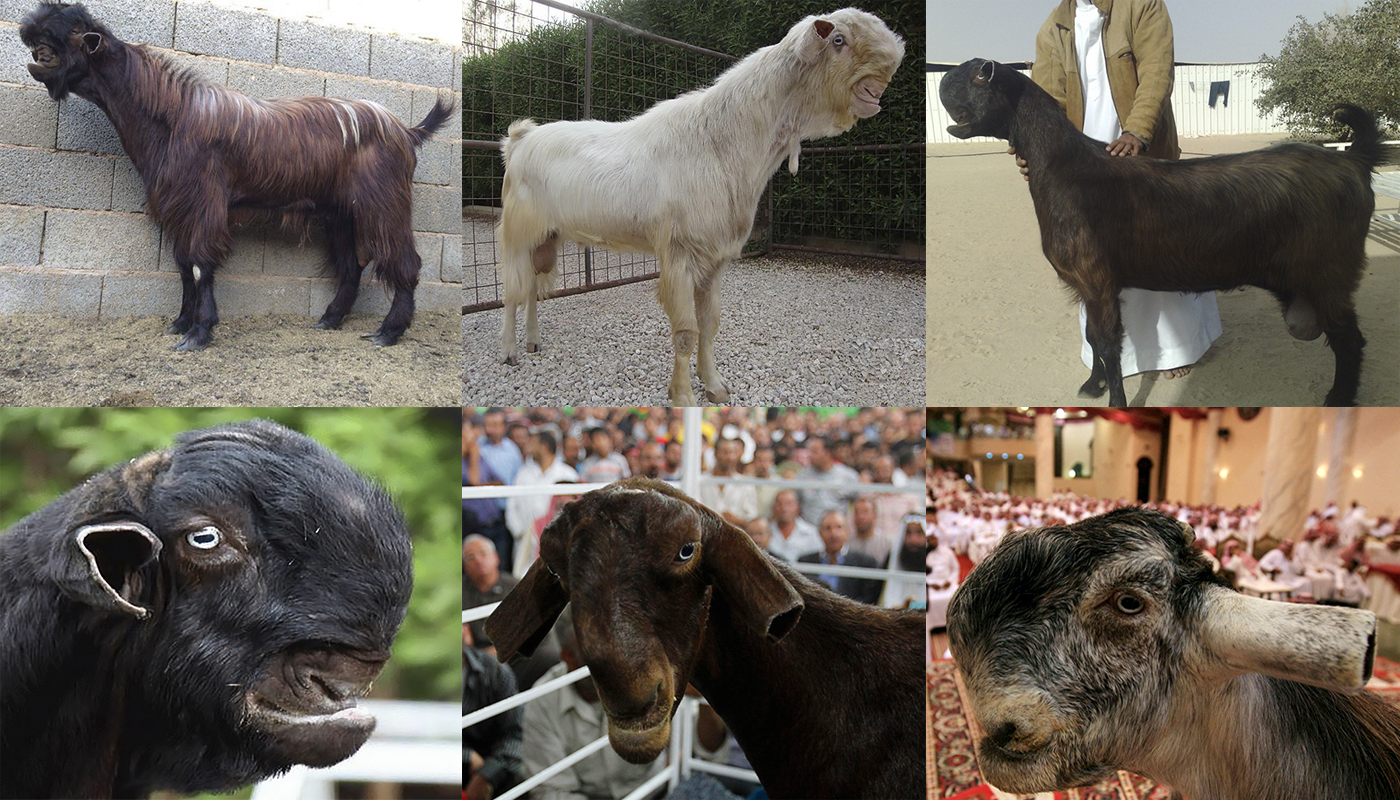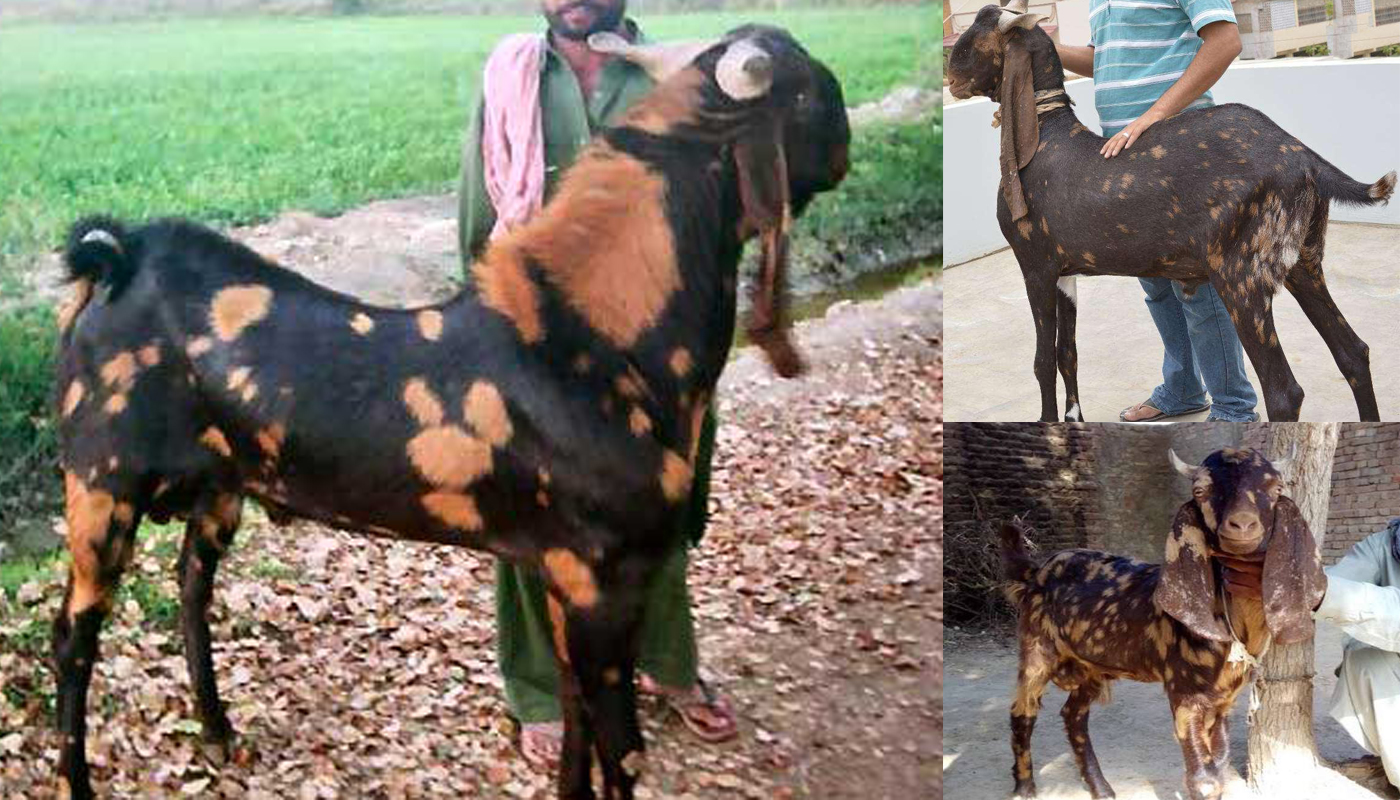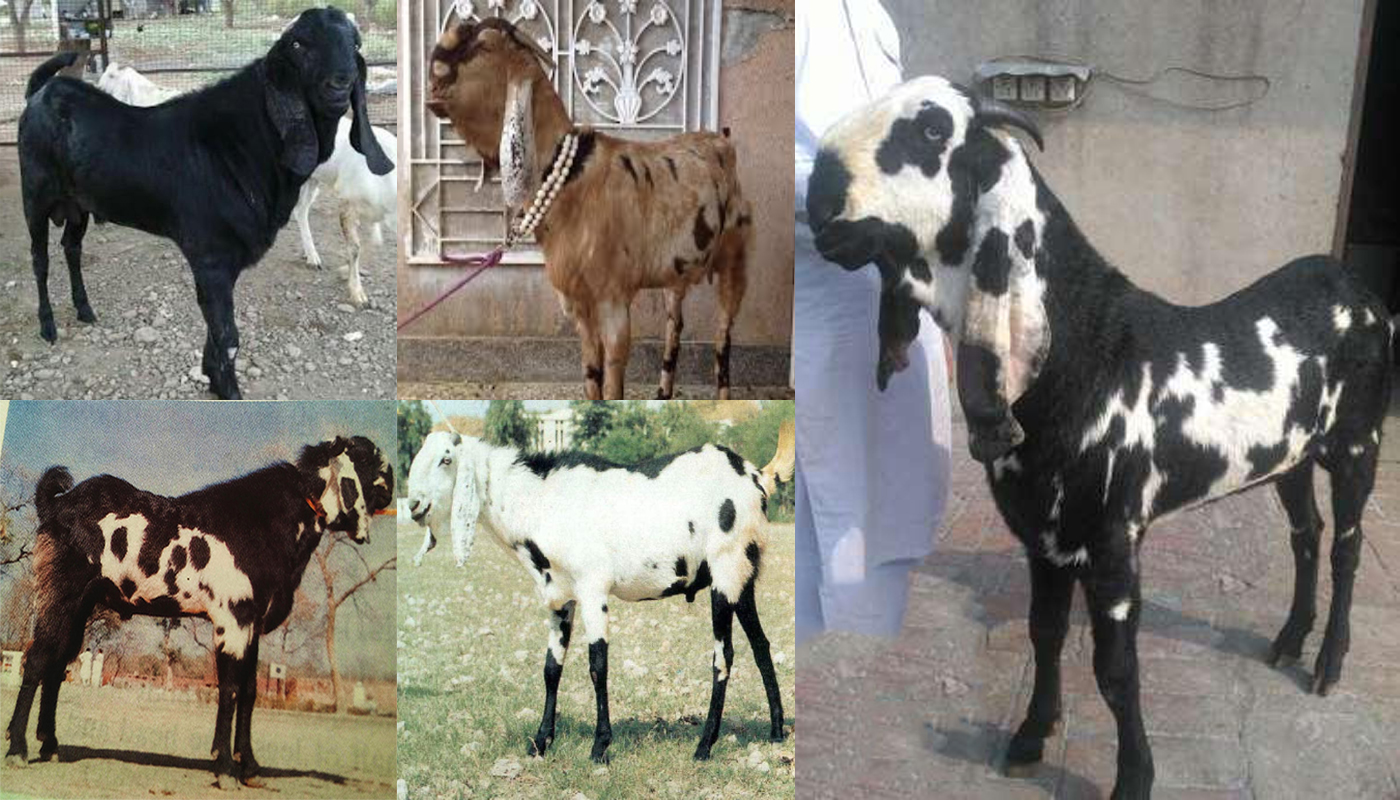
The amazing Alpine goat is not only beautiful, graceful, friendly and charming. They are also the top milk breed, one of the most climate adaptable and agile of most all the goat breeds.
These goats will compliment any goat herd and are bound to give you buckets of tasty, highly nutritious goats milk. Milk from which most things that can be from that you can make from cows’ milk. Such as ice-cream, cream, butter, soap and most dairy products.
Alpine Goat Quick Profile Overview
| Graceful French goats that produce a lot of fine quality milk for a better cow’s milk alternative | |
| Country of Origin: | France |
| Other Names: | American Alpine, French Alpine or Alpine polychrome |
| Breed Size: | Medium to large |
| You may Also Like: | 11 Smaller and Miniature Goat Breeds |
| You may Also Like: | Top 12 Large to Largest Goat Breeds |
| Main Purpose: | Milk production |
| Can be used for | Milk, Breeding, Pets, Skin |
| You may Also Like: | Top 10 Best Dairy Goat Breeds |
| You may Also Like: | 10 Most Popular Goat Breeds |
| Temperament: | Friendly and inquisitive but be warned these goats can be as suborn as mules. If they do not want to do something they won’t. |
| Good with Kids? | Supervised children are fine around these goats. Although they have long horns so be wary and vigilant with them around children. |
| You may Also Like: | 10 Best Goat Breeds to Keep as Pet |
| Ideal Environment: | They are a large breed and therefore they do need a lot more grazing space than most small to medium sized breeds. They also like things to climb on and over so it is nice to have something in the form of old car tires, an old table, etc. for them to climb over and occupy them. |
| Ideal Climate: | The adapt and can endure moth climates without much fuss |
| Conservation Status: |
Not Listed by the *ALC Common and easily available |
| Health Issues? | They are very hardy with no known health issues |
| Good Starter Goat? | Yes, but for the new goat owner with a good-sized land with lots of fresh grazing pastures |
| Goat Associations: | American Dairy Goats Association and the American Goat Federation |
| Goat Clubs: | Aplines International Club |
| Note: *ALC stands for American Livestock Conservancy | |
PHYSICAL CHARACTERISTICS
| These goats are said to be graceful and alert. They are the largest of the dairy goats and are one of the most popular breeds for commercial milk productions. The does can produce up to 4-5 liters of highly nutritious milk per day. Their milk can be used the same way as cows’ milk can for cheese, butter, cream, soap and drinking. | ||
| Color(s)⇒ |
There are many colors that are recognized in America but the ADGA does not really recognize the pure white and the Toggenburg patterned variety as a standard in the USA.
Cou Blanc (or coo blanc): which means “white-neck” – the goats have a white neck, black hind-quarters, white front quarters and either gray or black markings on its head.
Cou Noir (or coo nwah): which mean “black-neck” – the goats have a black neck, white hindquarters and the front is black,
Chamoisee: They are either bay or brown with various markings like a dorsal stripe on the legs, feet and they have a black face.
Pied: This is a base color that then has either a spotted or mottled pattern on it.
Two-Tone Chamoisee : Their front quarters are a lighter color than their either gray or brown hindquarters.
Broken Chomoisee: This is the Chomoisee color that is either splashed or banded with another color over the coat.
Sundgau: They are usually black and have white markings on their face and or underbelly.
Cou Clair: means clear neck. Their hindquarters are black, and their front quarters are either an off-white, gray, saffron or tan color
|
|
| Both the male and female Alpine goats’ colorings are the same. | ||
| Goat⇒ | Doe | buck |
| Breed Weight: | 135 lbs. | 170 lbs. |
| Breed Height: | 76 cm at withers | 81 cm at withers |
| Hair: | Short or can get to a medium length | Glossy short to medium length hair with a slight ridge along the back |
| Ears: | Held erect at the sides of their head. | Held erect at the sides of their head. |
| Horns: | The does horns are not as thick or long as the bucks. But they protrude to the back of her head and then slightly outward. | His horns are thick and long protruding towards the back of his head and then pointing slightly outward. |
| Matures at age: | 5 to 15 months | 3 to 15 months |
| Puberty Age: | 5 to 6 months | 4 to 9 months |
| Breeding Age: | 18 months | 1 year |
| Breeding Traits: | 1 Breeding cycle | Cover 20 to 30 does in 1 season |
DOE BREEDING & MILKING INFORMATION
| The does are highly prized for their milk production. They are not as big or muscular as their male counterparts. Their facial features are also a lot daintier with their Roman type snouts not being as pronounced as the males. They will only breed during their breeding season which is once a year. Her gestation period is around 153 days. |
|
| Breeding Period/cycle: | Usually lasts 12 to 36 hours Estrous cycle: Ave. 21 days/18 to 24 days |
| Gestation Period: | Usually around 148 to 155 day but most are 150 days |
| Kids: | They usually produce twins or have a single birth. They can have up to 5 kids (quintuplets). |
| Good Mothers? | They do make quite good mothers. |
| Lactation Period: | 284 days |
| Milking From: | 4 to 6 weeks after kidding |
| Milk Quality: | Excellent, The milk is known to be the most nutritious of all the dairy goat’s milk. They can produce anywhere from 4 to 5 liters of milk a day. |
| Milking Level: | Normal, They are not difficult to milk |
| You may Also Like: | Top 10 Best Dairy Goat Breeds |
GOOD TO KNOW
| Some useful information about the Alpine goat that is useful to know | |
| Where to buy them: | Prairie Fruits Farm, Red Gate Farm, Georgia Dairy Goat Breeders Association or check with the American Dairy Goat Association for an up to date list of breeders. |
| Agility: | Alpine goats are one of the most agile of the goat breeds |
| Interact with other animals: | They are fine around other livestock |
GENERAL INFORMATION
The Alpine goat is one of the most popular dairy goats for both farmers, homesteaders and commercial producers.
Although they can be used for meat, they are not really bred for this. Their meat has more of a gamey taste to it and the goat will need to be culled at least 4 months of age for it to be tender.
They are no used for the fiber production although they do have really nice fine fur
They are not used for leather production but they have lovely pelts that would make for fine leather manufacturing
HISTORY
The history of the Alpine goat goes back for many years as this goat has been kept for its milk for generations.
Goats are said to be the first animals that man domesticated. Evidence of this has been found in the form of paintings and bones in various ancient caves.
One of the goat bones in these old caves was of a break that could only have been healed by the help of human interaction. If the doe who had the broken leg was still in the wild, she would have died!
The goat’s bones have been carbon dated to around 15 000 years ago. The breed of this goat is thought to be a Middle Eastern (or then Persian) breed the Pashang. The Pashang (also known as the Bezoar) is said to be the forefather of most of the European goat breeds found today. The Alpine is one of those goat descendants.
The Alpine is named after the area from which they originated which was the French Alps. In the wild and through the generations the Alpines incredible agility was developed through natural selection.
This agility was homed in order for them to be able to survive on the slopes of the mountains. Even in arid regions this goat has superior agility skills and scale almost anything.
Once goat farmers started keeping Alpines, they would breed them for their highly tasty and nutritious milk as well as different colors.
Sailors would select the Alpine breed to take on voyages with them as their personality topped with their agility made them ideal for sea travel. This would keep the sailors in fresh milk and meat for their journeys.
The sailors would also leave a breeding pair or more at different places they docked at. Then when they returned to that site, they could catch fresh meat and or milk for they stopovers.
Soon the Alpine became one of the most widely spread and much-used dairy goat throughout the world.
Goats have been brought to America from as early as the first settlers, mainly the Milch goat.
But it was in 1904 that the first goat showing was held at the World Trade Fair. Here a provision for the showing of the Milch Goat was made. Goats that were both bred in America and those imported from overseas were invited to participate.
1904 was quite a year for the dairy goat as the name was officially changed from Milch to milk. And the formation of the American Milk Goat Record Associated was created. This association is today called the American Dairy Goat Association.
Alpines that had been imported from the Black Forest in Germany by Carl Hagenbeck were shown at the World’s Fair in American in 1904. He had cleverly designed their pen to mimic that of a small Swiss Alps in order to show the two does he had imported impress agility. They delighted over 20 million people who attended the show that year with the lovable antics. However not much is known of what becomes of these does after the fair ended.
In Chicago, in 1906 a Mrs Edward Roby was trying to create the perfect “American Goat”. One that’s milk would be free of any tuberculosis so that children may be able to drink it. These goats were a mix of the Swiss goats and local Milch goats. They were never registered, or they would have perhaps become the first American Alpines.
The first recorded French Alpines were brought to the United States in 1922. These were brought in by Dr. Charles P. Delangle. He and a friend of his had hand-picked and transported 22 Alpine goats as they had come down off the Swiss mountain.
Dr. Delangle was expelled from the American Milk Goat Record Association due to ill health and many conflicts with various high up board members in 1923. Whereupon he completely dropped out of owning goats and sold his entire herd. But Dr. Delangle legacy lives on as all Alpine goats registered in America today have a link back to the original line he imported into the USA.
VIDEO
USEFUL LINKS
- American Goat Society(AGS)
- American Goat Federation (AGF)
- American Dairy Goat Association (ADGA)
- American Cashmere Goat Association (ACGA)
- Canadian Meat Goat Association (CMGA)
- Canadian Goat Society (CGS)
- Animal Shelter (ASPCA)
- American Veterinary Medical Association
- American Poultry Association
- American Animal Welfare Society
- American Animal Control
- American Animal Husbandry Society
References
- https://alpinesinternationalclub.com/about-the-alpine-goat/
- https://livestockconservancy.org
- https://en.wikipedia.org/wiki/Alpine_goat
- http://afs.okstate.edu/breeds/goats/alpines/index.html//#content
 Chamois Goat Breed – Everything You Need to Know
Chamois Goat Breed – Everything You Need to Know Kalahari Goat Breed – Everything You Need to Know
Kalahari Goat Breed – Everything You Need to Know Discover 8 Unusual Goat Breeds From Around the World | Unique Characteristics & Cultural Significance
Discover 8 Unusual Goat Breeds From Around the World | Unique Characteristics & Cultural Significance Damascus Goat Breed – Everything You Need to Know
Damascus Goat Breed – Everything You Need to Know Thuringian Goat Breed – Everything You Need to Know
Thuringian Goat Breed – Everything You Need to Know Sahelian Goat Breed – Everything You Need to Know
Sahelian Goat Breed – Everything You Need to Know Kamori Goat Breed – Everything You Need to Know
Kamori Goat Breed – Everything You Need to Know Kinder Goat Breed – Everything You Need to Know
Kinder Goat Breed – Everything You Need to Know Murcia Granada Goat Breed – Everything You Need to Know
Murcia Granada Goat Breed – Everything You Need to Know Golden Guernsey Goat Breed – Everything You Need to Know
Golden Guernsey Goat Breed – Everything You Need to Know 10 Best Goat Breeds for Meat Production
10 Best Goat Breeds for Meat Production Beetal Goat Breed – Everything You Need to Know
Beetal Goat Breed – Everything You Need to Know